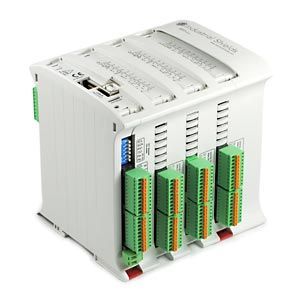Industrial automation of a semiconductor manufacturing process
Reducing costs with an industrial PLC Arduino and some sensors
Optimizing process control
The semiconductor materials manufacturing industries have been improving their products at exponential levels for years. Technology advances very quickly and small changes are very important in order to compete on the market.
A distribution company is looking for a solution to implement some system for its final customers that will allow them to make a qualitative leap and get ahead of the competitors. In this case, the aim of Industrial Shields is using its programmable logic controllers to optimize process control and reduce costs.

Summary
In recent years, semiconductor materials have become increasingly important in our world.
Today, they are present in almost all areas of our lives and are a key part of them. They can be used both as conductors and as insulators, depending on their characteristics, providing great usefulness in the industrial environment.

Goals
Our customer is looking for a solution to optimize some part of the semiconductor manufacturing, reducing costs to compete in the market.
As the whole creation process is already following strict requirements, Industrial Shields has focused on optimizing the clean room where the silicon wafers are stored before processing.
The goals are to implement:
-
different types of sensors and
-
an electrical solution
to regulate the lights and optimize their consumption.
The first sensors to be implemented will be temperature ones. For a better measurement, it will be necessary to set some in the different places of the room, since any variation could permanently damage the products. Like the temperature sensors, the humidity and dust sensors will be placed throughout the room to obtain the maximum reliability in the results.
Industrial Shields PLCs for Arduino automation can be set with multiple sensors working at the same time, choosing one of their communications, such as I2C or RS845 with Modbus, depending on the devices and the distance to operate. All collected data will be sent via Ethernet or Wi-Fi to a “backup” database server and also to a cloud server that could be monitored from another location.
Advantages
The strengths of working with open source based PLCs are:
Affordable price
Cheaper devices than others with similar characteristics, manufactured by big private license brands.
Wide variety of options
Flexible and adaptable devices, as well as safe and resistant, designed to the industrial environment. Several families of industrial controllers.
Ownership
You as a customer will become the owner of the whole application, thanks to the fact that you will know the code used.
Extra features could be added later to improve the system. One option would be to control the lights in the room with a DALI system, timing when they should be opened or turned off, thus saving money.
Ask for more information
Fill in the form below if you need more information
